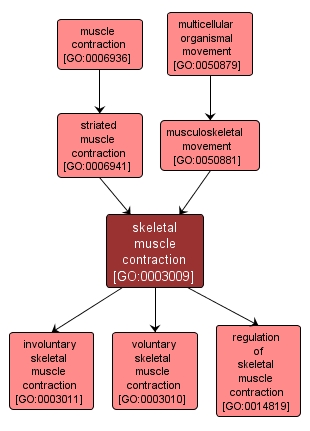| Desc: |
A process whereby force is generated within skeletal muscle tissue, resulting in a change in muscle geometry. Force generation involves a chemo-mechanical energy conversion step that is carried out by the actin/myosin complex activity, which generates force through ATP hydrolysis. In the skeletal muscle, the muscle contraction takes advantage of an ordered sarcomeric structure and in most cases it is under voluntary control. |














